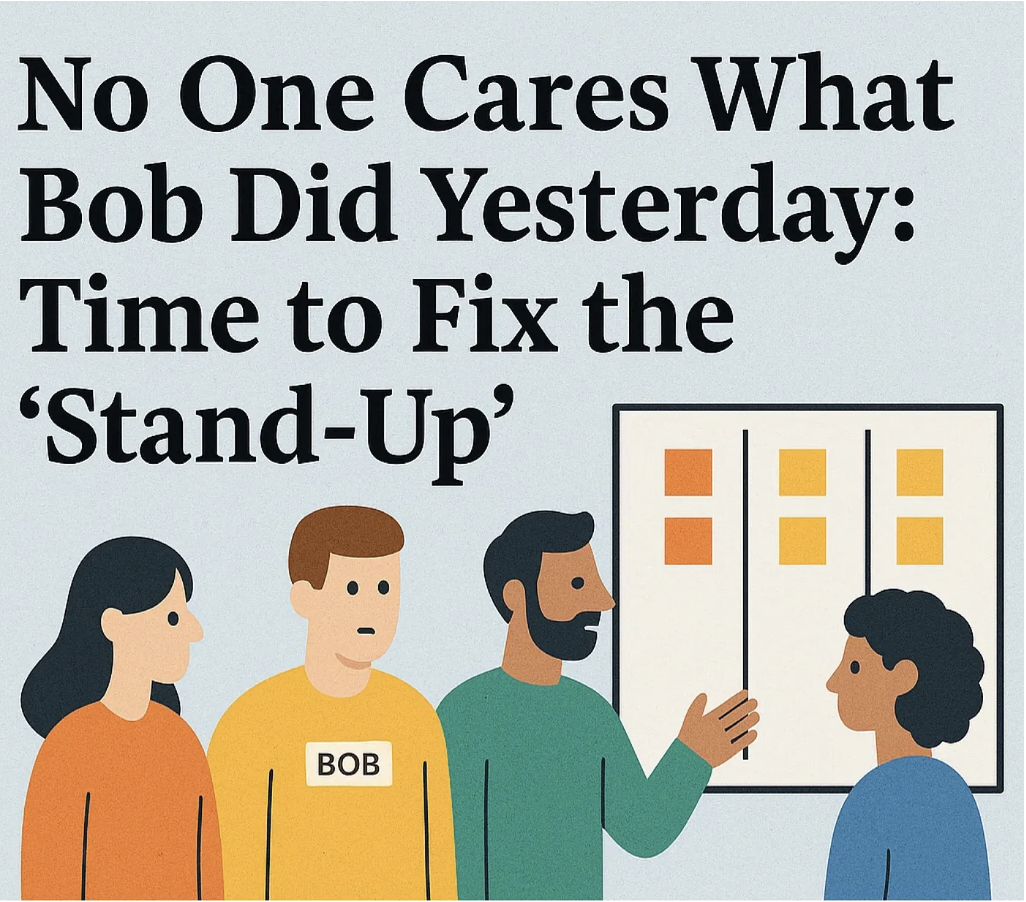The Kanban Perspective on Teams

To Team or not to Team?
The comparison between Kanban and Scrum obviously comes up often when we're talking to teams, especially in the context of Professional Scrum with Kanban. While they are more similar than many practitioners realize, one key difference is the perspective on Teams.
If you look at the definition of Kanban or Lean, you wouldn't find teams anywhere there.
If you look at the Agile Manifesto, you can find "The best architectures, requirements, and designs emerge from self-organizing teams"
Scrum is quite clear about the topic (Quoting the Scrum Guide)
"Scrum Teams are self-organizing and cross-functional. Self-organizing teams choose how best to accomplish their work, rather than being directed by others outside the team. Cross-functional teams have all competencies needed to accomplish the work without depending on others not part of the team. The team model in Scrum is designed to optimize flexibility, creativity, and productivity."
Does Kanban believe teams cross-functional self-organizing teams aren't useful?
Teams as an emerging property?
I personally believe that even if kanban the tool doesn't talk about teams (obviously since it's just a visualization and process-driving tool), despite the fact that the Kanban Method for evolutionary change doesn't talk about teams (obviously since it starts from where you are, respecting your current structure, letting changes be pulled from actual need), more effective patterns for team formation will emerge when Kanban is used professionally.
At their core, Teams affect communication bandwidth. They partition the organization to enable increased communication bandwidth among people in a team while counting on the fact that communication bandwidth to people outside the teams is not that important. Since we are talking about people, not network nodes, teams also allow the communication bandwidth to increase, the longer the team is working together, due to the team formation model. I recently read "The Talent Code" where the behavior of our brain around learning new skills using myelin to wrap neurons to increase bandwidth reminded me of how teams behave.
So it seems like teams can really increase our effectiveness, and everyone in a reasonably sized organization cannot even bear to think about getting rid of the partitioning, right?
Well, some of the Kanban thinking says that since Kanban massively reduces coordination costs via hyper-visualization and the pull system, the size of teams can increase significantly. Since we advocate using classes of service to allocate capacity to demand, thereby maintaining flexibility, we shouldn't allocate people to demand.
The main reason not to go to teams is that teams might be local optimization. If our workload/demand was certain, and the uncertainty as to what effort/specialty is needed to deliver it was low, we could build the teams that optimize our performance. If that workload/demand didn't vary over time, we could maintain the same teams and still have optimal effectiveness. But since in most environments we are facing a complex system with uncertainty/variability in the workload/demand, as well as the implementation effort/specialty required, it seems like sustaining stable teams will cost us in some optimization.
Consider the following progression:
- Functional/Component Teams based on specialization
- Teams On-Demand - whenever pulling a new Feature for work, associate the relevant people with it. They will deliver that feature, and after a few weeks return to their home teams. This approach provides lots of flexibility, but typically has relatively high coordination costs. It also doesn't really benefit from the improved communication bandwidth among the team members that you get from persistent teams. This is very similar to the Feature Driven Development team mode by the way.
- Project/Initiative Teams - whenever pulling a new Project/Initiative for work, associate the relevant people with it. They will work together as a virtual team for the duration of that project/initiative, and after a few months, return to their home teams. The benefits of this approach is lower coordination costs as the teams don't change that often. In addition the people working towards the same business goal are working together. The communication bandwidth increases as well over time, as well as the feeling of purpose and alignment. On the other hand, flexibility goes down. It is harder to shift people into projects/initiatives. It is harder to shift people out. If there is significant variability in the specialization required along the life-cycle of the project, selecting the right team becomes hard. If you work on versatility of your people, or already have a great group of generalizing specialists, this will be less of a problem. It can also be addressed by keeping a slack of several people working outside of project/initiative teams, that can be easily shifted in and out of activities on demand. It makes even more sense if those people are your experts/heroes. I'm seeing this mode in action in several organizations.
- Teams pull work - The next mode is where you create stable work cells that are able to handle almost everything you throw at them. These work cells stay together as the main organizational unit, and pull work based on the next business option the organization wants to exercise, regardless whether it is to accelerate an existing initiative or start something new. Here the communication bandwidth grows stronger and stronger. The flexibility and agility to shift business priorities and help swarm to work in process remains quite high, but the internal team flexibility remains an issue. The same slack of people not associated to teams can help here as well. I've seen this specific mode in action in several organization, and it works great, assuming you are ready for the change.
- On demand teams - Wait, didn't I mention this one? Yes, I did. The difference here is that assuming you somehow have a tightly knit group which already managed to create lots of communication bandwidths among the WHOLE group, you can have a win-win. Total flexibility and global optimization. This should be the holy grail of any manager of about 20-40 people I would imagine. A force to reckon with...
You could see that all of those modes could map to Scrum Teams. And that the classic recommendation for doing Scrum professionally would be to have stable cross-functional teams that pull work in - option 4 above.
Mixing it up
You don't have to decide on one model. Not all work is created equal, so not all teams should follow the same structure. Some interesting examples:
- 80% on-demand, 20% focused on an initiative
- 80% on-demand, 20% cross-functional work cell (A-Team)
- 80% project teams, 20% on-demand able to swarm to a team in distress and help, or join a team to teach them some new skill as appropriate.
Evolutionary Change
Some organizations will jump in, create work cell teams, and start working. This is the recommended Scrum with Kanban pattern and the one I see most often in the field these days. It requires the right organizational energy to make this maneuver. If you have the ability to go down this path, do it.
There are other cases where a more evolutionary path makes more sense. Maybe you don't have strong support/conviction in the value of this new work structure. Maybe the organization is reeling from a recent change and you don't want to rock the boat too much at the moment.
If you want to go for a more evolutionary change mode, consider the following:
- Start with on-demand teams
- Pilot one initiative/project team - especially useful when you have a risky initiative with a lot of uncertainty and dependencies, that is mission critical. Assign the success of this team structure to one of your best and most trusted people, if not yourself. Whether he is the Coach, the actual Lead, or something else is secondary. The important thing is that he will be in charge of making the team structure work, and together with the team make the learning from that available to the rest of the organization
- Move to more and more initiative teams as necessary
- When a project/initiative finishes consider turning the team to a work cell to pull more features in that area, or more features in general
- Ideally, teams will have the capabilities to take almost all work on. If not, use a talent matrix showing what teams can do what and gaps to invest in. As well as talent matrix inside a team that will help teams grow some internal versatility (note not everyone on a team needs to know everything at the same level)
Cautionary Notes:
When creating teams be careful not to spread yourself too thin. If you have too many small teams it might be an indication you are not managing flow effectively at the Initiatives/activities level. I love teams of 4-5 people by the way.
If you find many people need to be on many teams, you have a real problem. It is ok for a minority of the people, especially specialists, to be needed by many teams. Maybe they should stay as auxiliary on-demand, while spending some of their capacity offloading knowledge to the teams. But if it's not a minority, then you really need to work on versatility, or the on-demand might be a better fit. The whole point of the teams is to create the communication bandwidth. Without that, they're just overhead.
Conclusion
Implementing the right team structure for your organization is a complex matter. What do we do in complex environments? We avoid "best practices", we get familiar with some "good practices" and mainly try something, get some transparency on whether it's working well or not, inspect, and adapt. Hopefully in this article I provided some patterns to help you inspect and adapt your team structure whether you're already using Scrum, Kanban, Scrum with Kanban, or if you're just starting.
Article originally posted by Yuval Yeret on Scrum.org


